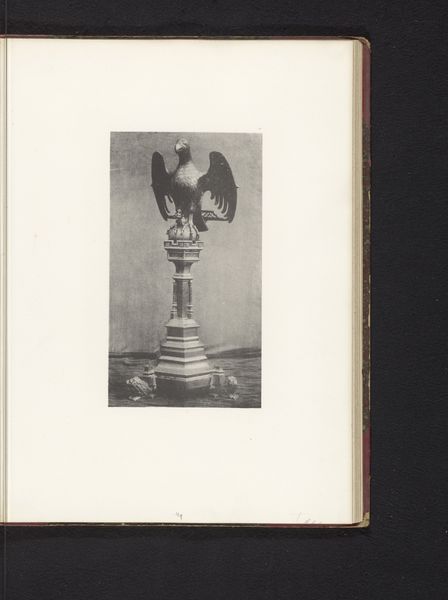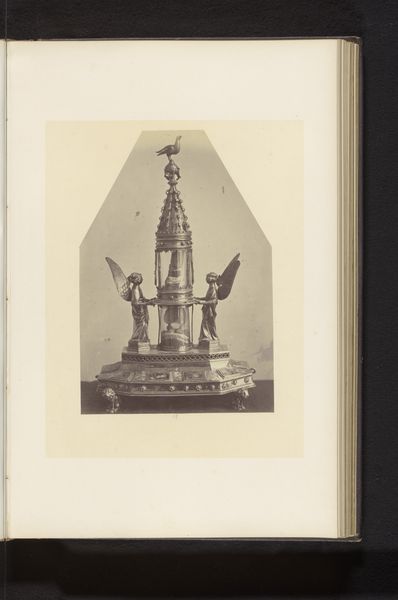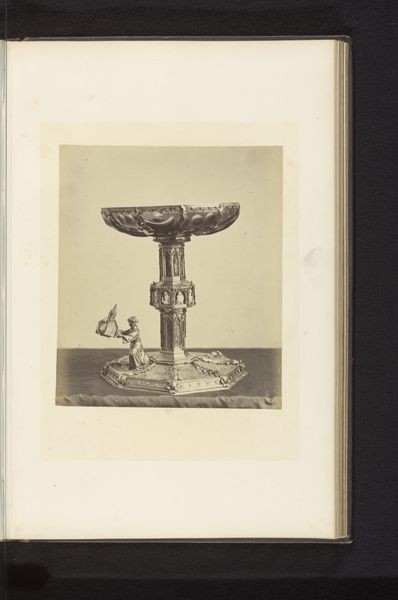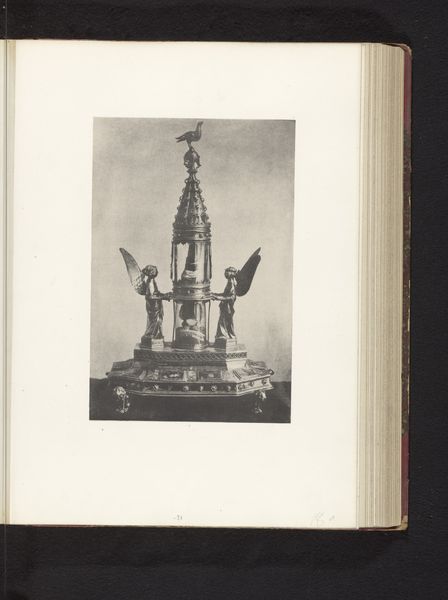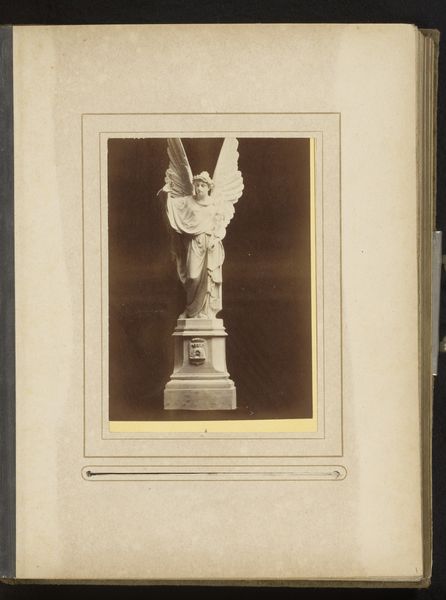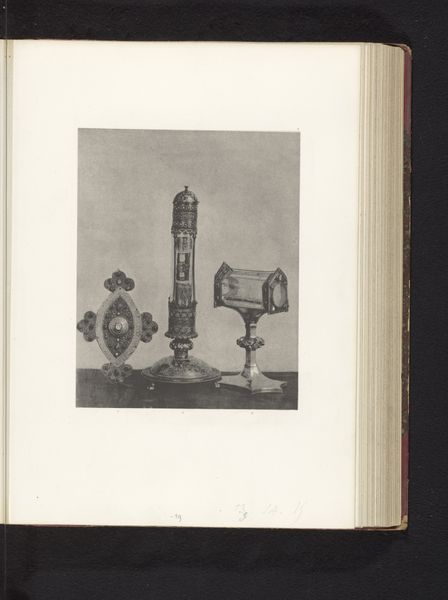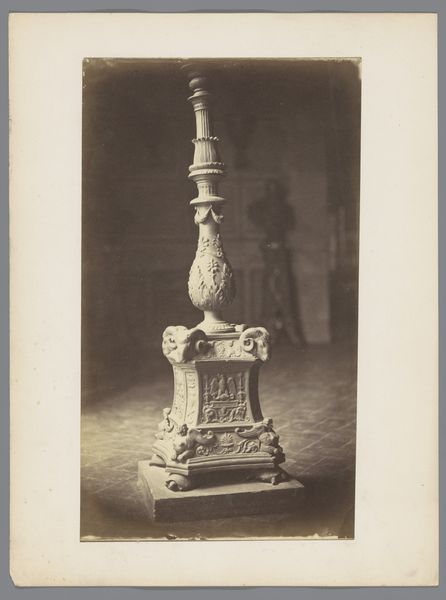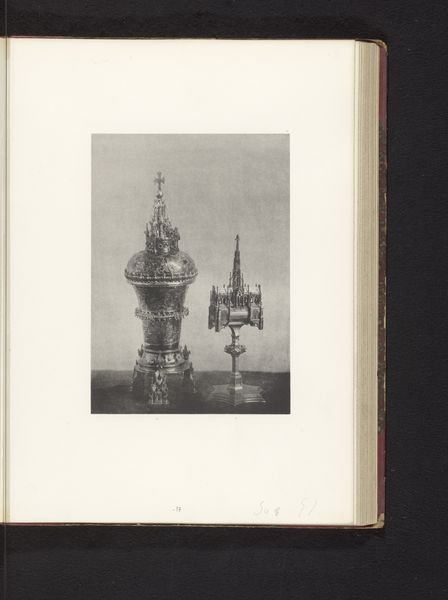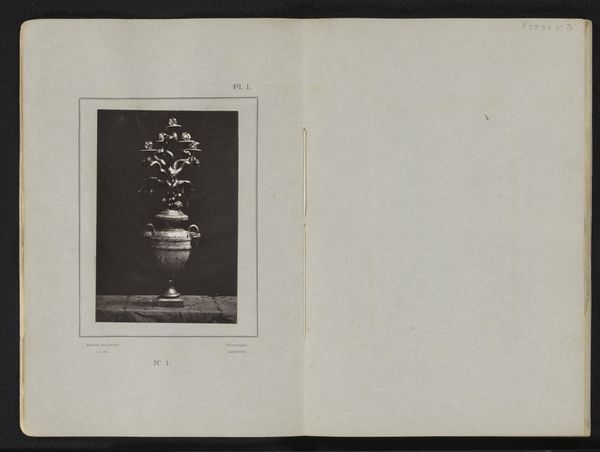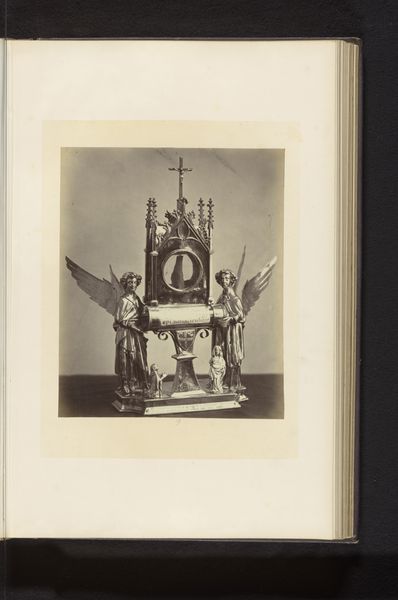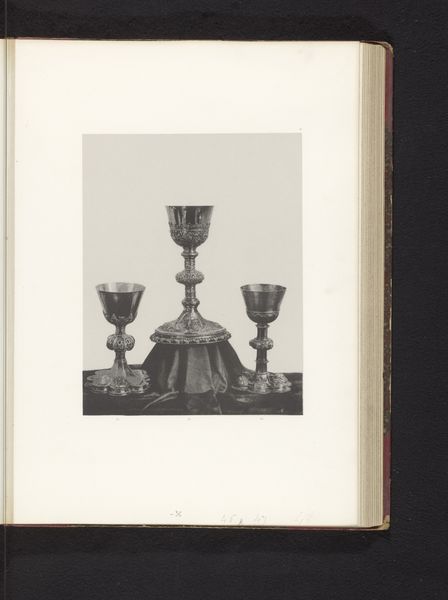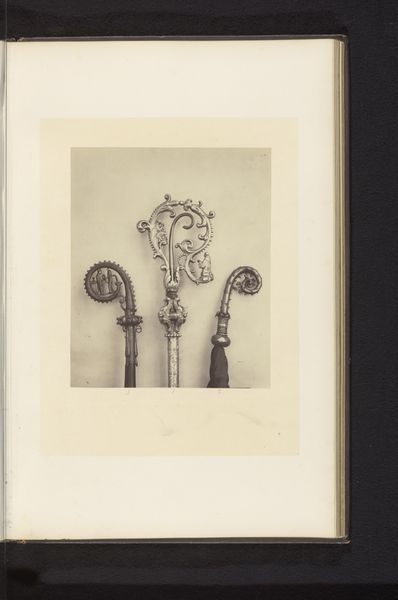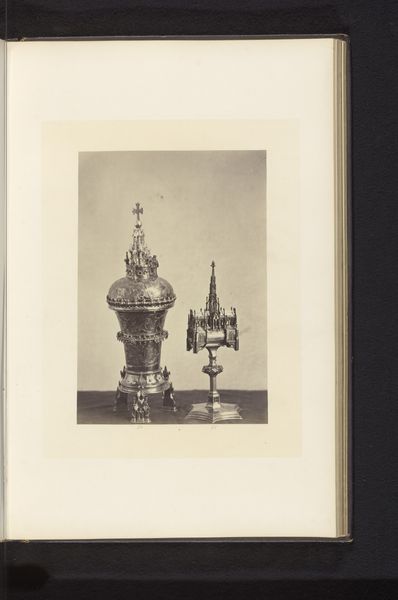
Sculptuur van een pelikaan op een voetstuk uit de Sint-Martinusbasiliek in Halle, opgesteld op een tentoonstelling over religieuze objecten uit de middeleeuwen en renaissance in 1864 in Mechelen 1864
0:00
0:00
Dimensions: height 245 mm, width 154 mm
Copyright: Rijks Museum: Open Domain
Joseph Maes captured this photograph of a sculpture of a pelican on a pedestal in 1864. It was displayed at an exhibition of religious objects from the Middle Ages and Renaissance in Mechelen. But what does this image tell us about the social and cultural context of 19th-century Belgium? Well, for starters, the pelican itself is a Christian symbol, representing sacrifice and charity. Its presence in a religious exhibition speaks to the enduring power of faith in Belgian society. The exhibition itself is also telling. These displays of historical artifacts were a popular way for nations to construct a sense of shared identity. By showcasing religious art from the past, organizers sought to connect contemporary Belgium with its medieval and Renaissance roots. The photograph serves as documentation and raises questions about the role of these exhibitions in shaping national identity. Historians can consult exhibition catalogs, newspaper reviews, and other primary sources to gain a deeper understanding of these events. The meaning of this artwork is something which is contingent on its social and institutional context.
Comments
No comments
Be the first to comment and join the conversation on the ultimate creative platform.
